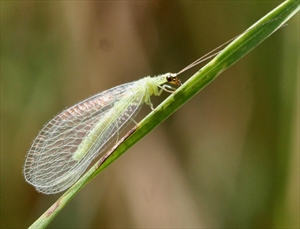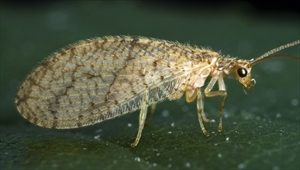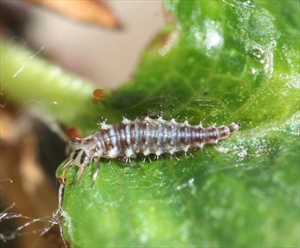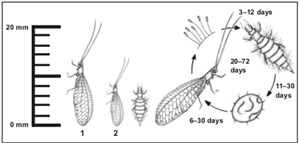- Worldwide distribution. Lacewings prey on aphids, scales, mealybugs, thrips, psyllids, whiteflies, and other small insects, and mites.
- Adults feed mainly on pollen, nectar and honeydew. There are some species that also feed on insects, and some that do not.
- Eggs are laid on thin stalks, singly or in groups, on the underside of leaves, wood, or side of buildings.
- Larvae have pincers for grasping and injecting venom.
- Management: grow or encourage flowing plants, e.g., sunflowers, marigolds, and allow weeds, e.g., dandelions, daisies, for nectar and pollen; best avoid pesticides, or chose soap, white or horticultural oils, or neem that breaks down quickly.








